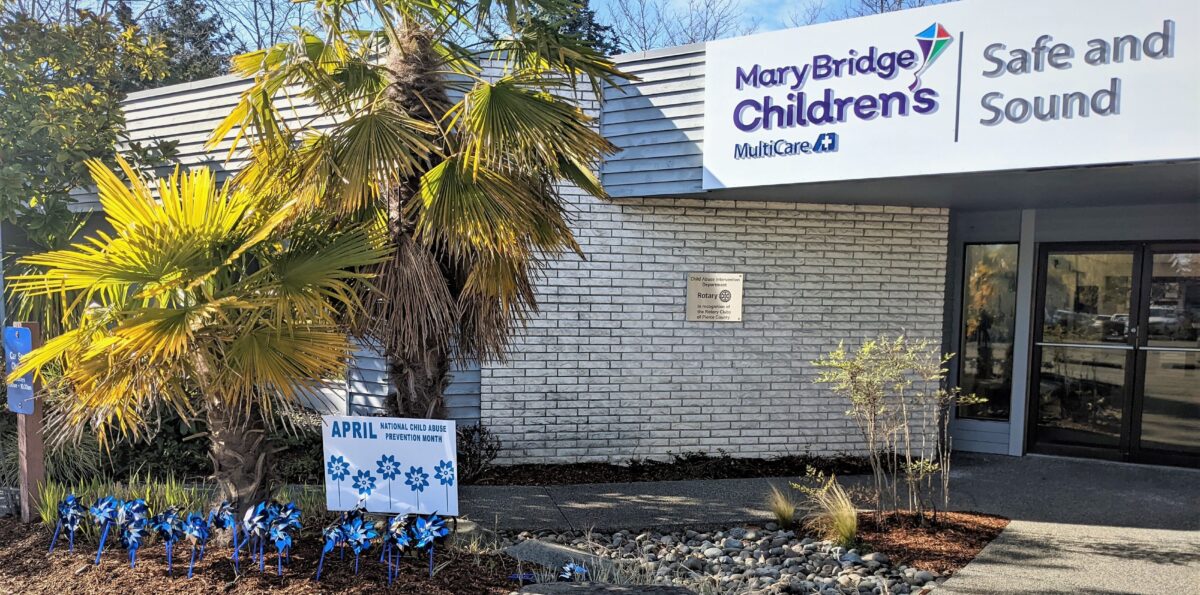Child abuse often goes unreported: Know the signs

April is recognized nationally as Child Abuse Prevention Month.
To raise awareness, blue pinwheels often line the lawns of children’s hospitals and advocacy centers around the country — including the Children’s Advocacy Center of Pierce County, located on the campus of Mary Bridge Children’s Hospital.
According to the National Children’s Alliance, the leading child advocacy and child abuse prevention organization in the United States, nearly 700,000 children are victims of child abuse every year.
“The reality is that a lot of child abuse goes unnoticed or unreported,” says Lisa Ryan, MSW, LICSW, director of pediatric care continuum at Mary Bridge Children’s. “If people know what signs to look for and how to report suspected abuse, we can collectively make a huge impact that will keep our children safer and healthier.”
The Children’s Advocacy Center of Pierce County, in partnership with Mary Bridge Children’s and local law enforcement and welfare agencies, offers medical assistance, family support and general education to empower families and community members to recognize the signs of child abuse.
In 2021, the Children’s Advocacy Center of Pierce County provided services to 610 children.
The COVID-19 pandemic created new challenges for child advocacy professionals. Increased isolation and time at home caused abuse rates to rise. But a lack of in-person learning and medical appointments meant fewer opportunities for abuse to be reported and investigated.
What are the signs of child abuse, and what can you do if you suspect a child in your life is the victim of abuse?
According to the Child Welfare Information Gateway, regardless of the specific type of abuse, general signs to watch for if you suspect child abuse include:
- The child shows sudden changes in behavior or school performance.
- The child doesn’t receive treatment for medical or physical problems.
- The child has learning difficulties that are not associated with learning or psychological disabilities or disorders.
- The child is always on edge as if something bad is about to happen.
- The child lacks adult supervision.
- The child is overly compliant, passive or withdrawn.
- The child comes to school early, stays late or doesn’t want to go home.
There are also signs that an adult might be abusive. These include:
- The adult shows little concern for their child.
- The adult denies the child’s problems in school or blames the problems on the child.
- The adult asks teachers or other supervisors to use harsh discipline with the child.
- The adult sees the child as burdensome.
- The adult demands a level of achievement that is not attainable by the child.
- The adult looks to the child for care, attention and satisfaction of emotional needs.
Signs of abuse may also appear with the parent and child’s relationship with each other:
- They rarely touch or look at each other.
- They consider their relationship to be entirely negative.
- They state that they do not like each other.
It is important to know that while these signs may indicate child abuse, they do not automatically mean that abuse is happening.
If you suspect a child is being abused, or if they tell you someone is hurting them, seek care at the emergency department, contact the police or call the national child abuse hotline at 1-800-4-A-CHILD.
Get information about resources available from the Pierce County Children’s Advocacy Center.
You can support Mary Bridge Children’s ongoing efforts to end child abuse by participating in or donating to Mary Bridge Children’s Courage, the annual weekend cycling adventure benefiting child abuse prevention and treatment programs at the hospital. For more information, visit Ride with Courage.